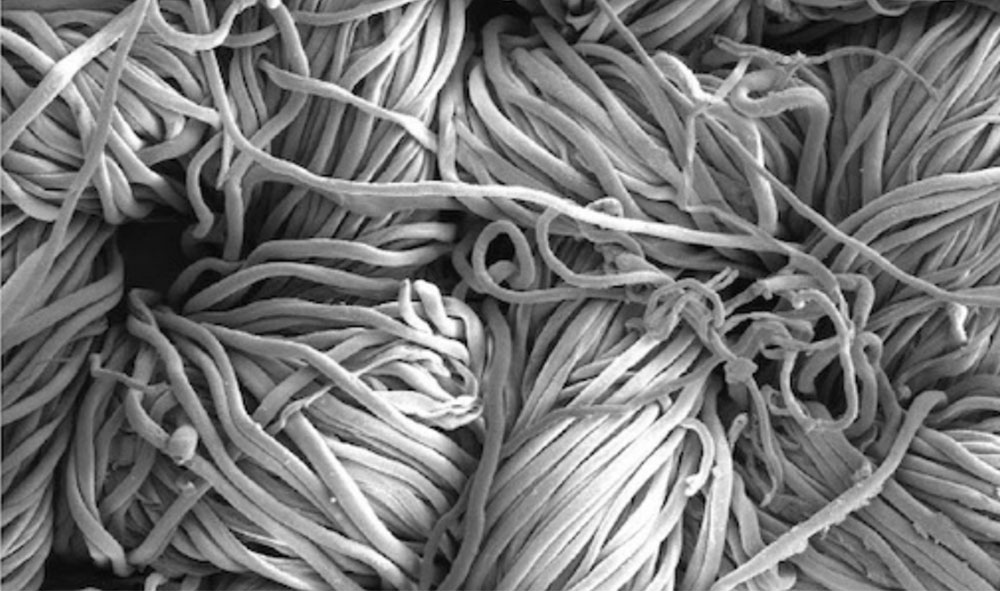A New Antimicrobial Cotton Textile with Cu ions in Nanofibers
January 10, 2023

The following news release was originally issued by the University of Maryland. A team of researchers developed new antimicrobial cotton textiles with copper (Cu) ions incorporated into the cotton structure at the molecular level (Cu-textile), utilizing the strong coordination bonding between Cu ions and the cellulose molecules. The resulting materials incorporate antiviral, antibacterial, wearable, and washable properties. To investigate how active copper ions are trapped in the materials and their long term stability, the researchers used the Inner-Shell Spectroscopy (ISS) beamline at the National Synchrotron Light Source II (NSLS-II). NSLS-II is a U.S. Department of Energy Office (DOE) Office of Science user facilities located at DOE’s Brookhaven National Laboratory. For more information on Brookhaven’s role in this research, contact Cara Laasch (laasch@bnl.gov 631-344-8458).
Cotton textiles are ubiquitous in daily life, and they are also one of the primary mediums for transmitting viruses and bacteria. Conventional approaches to fabricating antiviral and antibacterial textiles generally load the functional additives onto the surface of the fabric and/or their microfibers. However, such modifications are susceptible to deterioration after long-term use due to leaching of the additives.
Recently, a transdisciplinary and multi-institutional research team led by Liangbing Hu, Herbert Rabin Distinguished Professor of Materials Science and Engineering (MSE) at the University of Maryland (UMD) and director of the Center for Materials Innovation (CMI), and William Bentley, Fischell Distinguished Chair in Engineering and director of UMD’s Robert E. Fischell Institute for Biomedical Devices, and Robert M. Briber, Professor of Materials Science and Engineering and Associate Dean for Research, developed a new antimicrobial cotton textiles with Cu ions incorporated into the cotton structure at the molecular level (Cu-textile), which utilize the strong coordination bonding between Cu ions and the cellulose molecules and shows antiviral, antibacterial, wearable, and washable properties. This study was published in Nature Nanotechnology on December 30, 2022.
The Cu-textile displays high antiviral and antibacterial performance against the Tobacco mosaic virus (TMV) and Influenza A virus (IAV), as well as E. coli, S. typhimurium, P. aeruginosa, and B. subtilis bacteria. This multi-institutional study also included research teams from National Institute of Standards and Technology (NIST), Purdue University, and Argonne National Laboratory.
For additional information:
Qian, Ji et al (2022). “Highly Stable, Antiviral, Antibacterial Cotton Textiles via Molecular Engineering,” Nature Nanotechnology. DOI: 10.1038/s41565-022-01278-y
2023-21014 | INT/EXT | Newsroom









